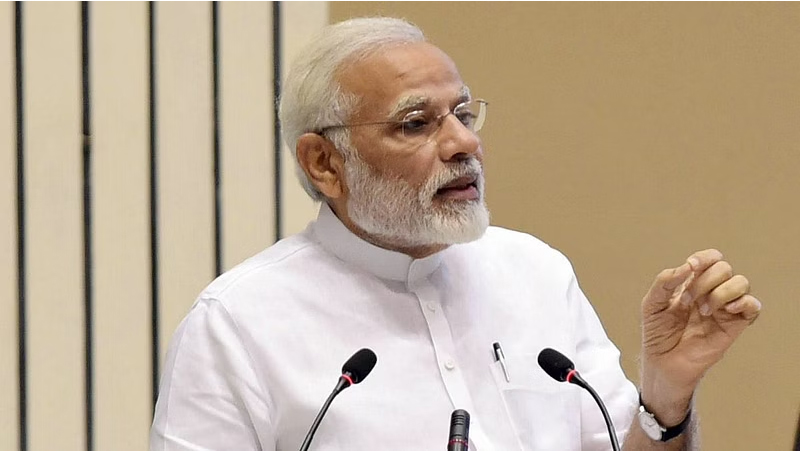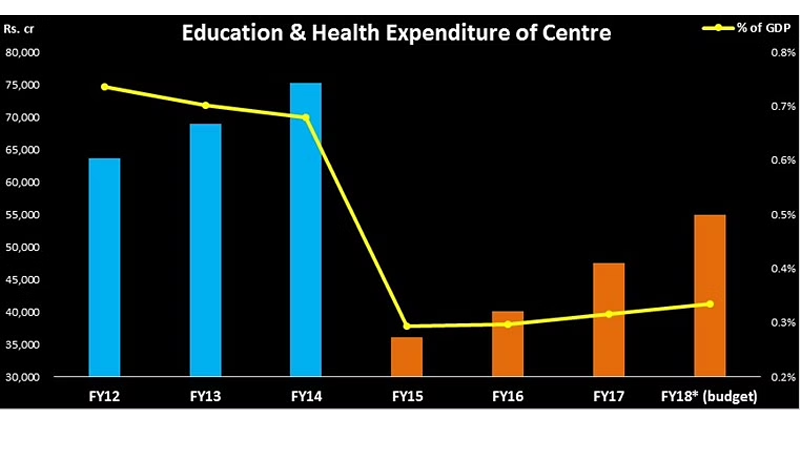Praveen Chakravarty
March 20, 2018

Prime Minister Narendra Modi | PIB
Modi govt’s tenure has been a case of squandered opportunities and a ‘lost half a decade’ for the prosperity of Indians.
The Congress party unveiled its economic resolution at its 84th plenary session in Delhi recently. A resolution is not a manifesto. It is an opportunity to step back, introspect, take stock, highlight government performance and paint macro themes and areas of focus. That is what the economic resolution of the Congress party does.
It first highlights the squandered opportunity of the Modi government, which was presented with a near-perfect alignment of stars with low oil prices, a robust global economy and an absolute majority in the Lok Sabha.
Economists are now talking about witnessing “green shoots” in the Indian economy after four years when we should have been harvesting a bumper crop by now. Alas, it has been a case of squandered opportunities and a ‘lost half a decade’ for the prosperity of Indians.
Too often people ask, what is the fundamental difference in the BJP’s and the Congress’ economic policy doctrines? The Congress party has made it unambiguously clear in its resolution that it stands for economic growth through private enterprise and social justice through a strong welfare state. It also stands for a true federalist economic policy doctrine that abhors a “one nation, one policy” regime.
As regards the BJP’s economic policy vision, I am reminded of the story (apocryphal?) about when Mahatma Gandhi was asked what he thought of the western civilisation and he replied, “That would be a good idea.” Similarly, going by the Modi government’s management of the economy, one is tempted to say “yes, an economic policy vision for the BJP would be a good idea”.
There are four big economic challenges that our nation will have to brace for in the coming decades.
1: Generating productive jobs and employment for millions of youths
2: Providing high-quality education, healthcare and a social safety net for hundreds of millions of poor
3: Managing agrarian distress and volatile farm to non-farm transition
4: Arresting widening individual and spatial economic inequality
The very first step to generating jobs in the economy is to bring back business confidence and a revival of private investment. Good productive jobs can be created in large numbers, primarily by the private sector. The Congress party, perhaps for the first time, resolved explicitly to fight for the economic freedom of India’s entrepreneurs from the clutches of tax terrorism, over-burdened regulations and an oppressive and whimsical policy regime. Whatever one’s views of the Congress party and its economic policy history may be, it is undeniable that this explicit resolution in favour of India’s entrepreneurs is a refreshing change.
India has abundant labour. But the quality of India’s human capital is what will determine India’s ability to join the ranks of industrialised and developed nations. Education and health are the two critical factors that will determine the quality of our human capital. Providing high-quality education and healthcare to its citizens is an unquestionable role of the state. The government cannot abdicate its responsibilities in these areas.
Unfortunately, the Centre’s expenditure towards education and health has fallen from Rs 75,000 crore in FY2014 to nearly Rs 50,000 crore in FY17 (Statement I – consolidated fund of India, revenue account – disbursements, government of India). There has been an absolute fall in central government expenditure towards education and health, and consequently as a percentage of GDP too. While it is acknowledged that education and health are concurrent and state subjects, the role of the Centre in these sectors is pivotal to ensure uniformly high quality of human capital across the entire country.
 The Congress party has resolved to increase investment in health, education and the social safety net, and believes strongly that it is the responsibility of the state to provide high-quality health, education and social security to its citizens. This is again a clear policy position in the current times of muddled thinking of abdicating these responsibilities solely to the private sector.
The Congress party has resolved to increase investment in health, education and the social safety net, and believes strongly that it is the responsibility of the state to provide high-quality health, education and social security to its citizens. This is again a clear policy position in the current times of muddled thinking of abdicating these responsibilities solely to the private sector.
More than half of India’s labour force is still engaged in agriculture. In the absence of adequate non-farm jobs in the economy, the farm to non-farm transition can be catastrophic. The terms of trade have shifted severely against agricultural labourers. This has resulted in a near 50 per cent increase in farmer suicides and deep indebtedness among small land owners. While it is imperative that policies aimed at increasing agricultural productivity are put in place, it is also equally pertinent to ensure safety nets for farmers through minimum support prices, rural employment guarantee schemes, and so on. The Congress party resolved to shift the terms of trade through a combination of productivity increases, minimum support prices, access to food supply chains, and a massive investment in technology.
Income inequality is a global challenge confronting all modern economies. Contemporary economic development paradigms that favour returns to capital over returns to labour have resulted in an alarming disparity in income and wealth among individuals. Recent research has documented that individual income inequality in India is at a 100-year high .The modern growth paradigm chases growth in terms of the average citizen’s income. It is time to focus on the median person’s income, which will also act as a measure of equality and inclusiveness. The Congress party resolved to focus and measure development through human development indicators as much as economic indicators.
Right-wing economists and commentators in India and abroad were floored by the rhetoric of “minimum government, maximum governance” and so on by the then BJP prime ministerial candidate Narendra Modi in 2013-14. It only needed a cursory analysis of the Gujarat economic model from 2002 to 2014 to understand how vacuous these slogans were.
Four years later, most of these commentators feel disenchanted and deceived. There may have been other reasons to support Modi in 2014 but ‘right-wing economics’ was certainly not one of them. Too often our commentators, influenced by global politics, succumb to the temptation of categorising India’s political parties into terminologies such as Left and Right or liberal and statist etc. All that is passé and too cliched to capture the size, scale and complexity of India’s multi-party electoral democracy.
There is much hand-wringing over whether the Congress party is Left or Right, socialist or capitalist, and so on. Without being a traffic cop or indulging in “isms”, the Congress party, in its resolution, has laid out a clear, unambiguous stand — its economic policy doctrine will encourage the private sector, reward risk-taking and win back economic freedom for India’s entrepreneurs.
The author is chairman of the data analytics department of the Congress party.
https://theprint.in/economy/reasons-support-modi-2014-right-wing-economics-wasnt-one/43312/
